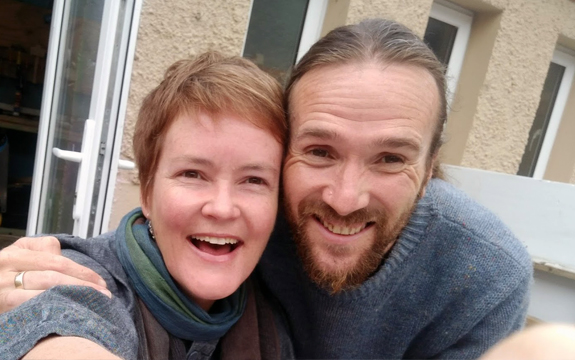Making Community Connections

In Summary
- Swinburne researcher Carolyn Wallace discusses her research into community connectors and how this can be applied to improving health services
- The findings from this research will be developed into a framework for health and service organisations
- Carolyn Wallace is part of the Social Innovation Research Institute
Almost every community has one: the person who sees gaps in the social fabric, who can judge how best to knit them up. The person who knows how to make sure those in need and are connected with those who can assist.
That person might come from the local faith group, a sporting club or some other social group. They might be retired professionals, busy parents or students. In the past they were labelled ‘lay helpers’ or ‘community leaders’.
In the last five years, the term ‘community connectors’ describes them.
“Community connectors notice and respond to issues in their community. They connect people up – with each other, with information, with organisations, and with resources,” says Carolyn Wallace, a Swinburne PhD student who is undertaking research on how community connectors operate within their communities.
Ms Wallace’s project is called ‘Boundary Spanning for Health’. “It comes out of this notion that people are disconnected because we’re separated by all kinds of boundaries – social, cultural, organisational, and professional,” she says. “Boundaries aren’t bad things but people need to be aware of them. Connectors are able to operate in different social, cultural, and organisational environments. They’re good at bridging those boundaries.”
Community connectors are often good at linking people and groups with services they need but may not know how to access, or even that such services exist.

Pictured: Carolyn Wallace (left) with one of the 'community connectors' in Ireland.
‘Boundary Spanning for Health’ is exploring how health services can engage more effectively with the hardest to reach people in their community by building on existing community connections and using digital technologies. Case studies have been undertaken in both rural Victoria and in East Cork, Ireland, in part because the different Australian and Irish health systems offer different perspectives on how such connections can work effectively.
“It’s not about how can we have more services,” says Ms Wallace. “It’s about how people can access services that already exist.”
“Services aren’t always visible, well-promoted, open at suitable hours, affordable, or easy to get to from rural locations,” says Ms Wallace. “Even in the suburbs, people can be isolated because they lack transport or childcare. Some can’t get away because they’re carers, or have mobility issues. Language barriers can be an issue.”
Ms Wallace aims is to write her findings up as a framework for health and service organisations, including tip sheets and some do’s and don’ts. Organisations could use these documents to help them cultivate contacts with community connectors and their reach to help others in need.
It’s a change in how organisations work with communities.
“We’re looking at a shift in the sharing of power,” says Ms Wallace. “It recognises that expertise doesn’t reside only in paid professionals. We have people who are experts in their own health and in their own lives. We have very valuable intermediaries who can be of benefit to the service system and the community. They don’t necessarily want to be paid and they certainly don’t want to be co-opted into the system, but they are doing these things anyway. Why not make more systematic use of it?”
The work Ms Wallace has done in Ireland and Australia has already brought about changes.
“I wrote a short report for the South and East Cork Area Development (SECAD) and their CEO wanted to know what they could do for the connectors they’d identified.” Ms Wallace’s research showed that dealing with bureaucracy was one of the biggest issues. Community connectors also wanted to find ways to make their own links into local health and social services to form better partnerships.
“I said they could assist their connectors by helping people to link up, so SECAD are having a connectors’ forum in October.”
In rural Victoria, a school that had taken part in the research have already incorporated boundary spanning working into their processes by introducing weekly boundary spanning meetings.
“A teacher I spoke to said, ‘Since you came, our principal has boundary spanning meetings every Thursday. He’s asked me to bring in five more connectors’,” says Ms Wallace. “So that’s a live example – you just bring an approach to an organisation and the leaders can run with it.”
Formalising ways to develop community connectors has a lot of potential, but there are dangers too.
“The biggest challenge is that you could kill the magic if you institutionalise your connectors,” says Ms Wallace. “People are quite clear that they don’t want that to happen. They also can’t always be involved at the same pace. You just have to be mindful that people’s energies do ebb and flow. Personal circumstances can change. You have to be flexible.”
With deeper understanding, developed across several communities, Ms Wallace hopes to create a guide to community connections that will show how organisations can nurture them without developing rigid structures, for the benefit of all concerned.
Carolyn Wallace is part of the Social Innovation Research Institute.
Find out how Swinburne is combining technology and humanity to explore intelligent, citizen-engaged solutions to complex social problems.

